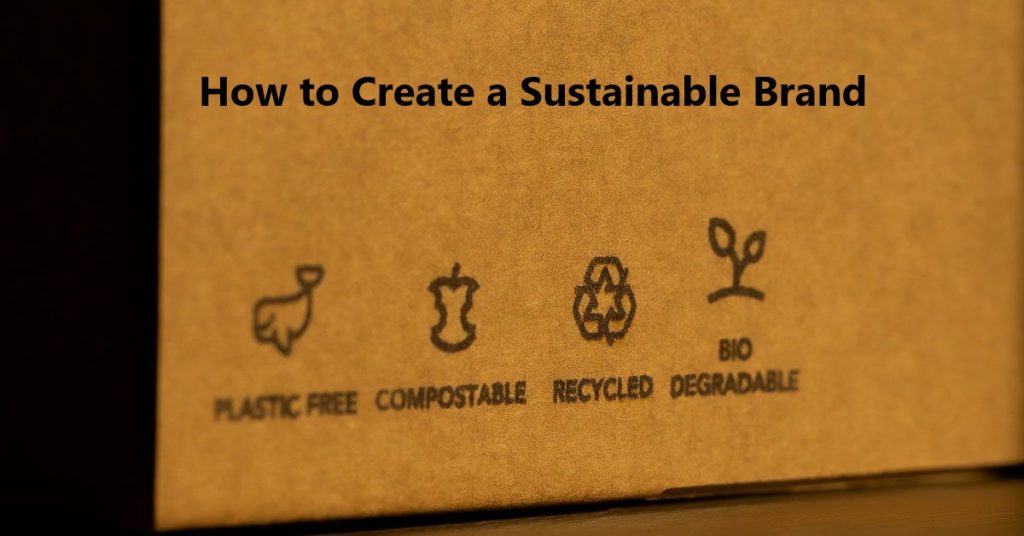 Learning how to create a sustainable brand is becoming increasingly important in today’s business landscape. Consumers are more aware of environmental and social issues, and they expect brands to act responsibly. Creating a sustainable brand means adopting practices that minimize environmental impact while promoting social responsibility. This includes sourcing eco-friendly materials, reducing waste, and partnering with ethical suppliers. Moreover, transparent communication about sustainability efforts builds trust with consumers. As more businesses prioritize sustainability, those that embrace these practices will lead the way toward a more sustainable future.
Learning how to create a sustainable brand is becoming increasingly important in today’s business landscape. Consumers are more aware of environmental and social issues, and they expect brands to act responsibly. Creating a sustainable brand means adopting practices that minimize environmental impact while promoting social responsibility. This includes sourcing eco-friendly materials, reducing waste, and partnering with ethical suppliers. Moreover, transparent communication about sustainability efforts builds trust with consumers. As more businesses prioritize sustainability, those that embrace these practices will lead the way toward a more sustainable future.
Understanding Sustainability in Branding
Sustainability in branding refers to a company’s commitment to environmental, social, and economic practices that prioritize long-term impact over short-term gains. A sustainable brand integrates eco-friendly processes, ethical sourcing, and social responsibility into its core identity. In today’s business landscape, consumers are increasingly aware of environmental and ethical issues. They often prefer brands that actively work toward reducing their carbon footprint and supporting sustainable initiatives. As a result, understanding how to create a sustainable brand is essential for companies that want to stay relevant and competitive.
Incorporating sustainability into a brand isn’t just about promoting green products. It’s also about adopting practices that support the environment and society. This includes using renewable resources, reducing waste, and ensuring fair labor practices. A sustainable brand focuses on long-term value, ensuring that future generations can benefit from current business practices. For many modern businesses, sustainability has become a key differentiator that builds trust with customers, investors, and stakeholders. In fact, research shows that nearly two-thirds of consumers prefer to buy from sustainable brands. This makes it crucial for businesses to incorporate these values.
Moreover, building a sustainable brand helps foster loyalty and strengthens brand reputation. By aligning your business with sustainability goals, you not only appeal to conscious consumers but also create a resilient business model that can adapt to future challenges. Understanding how to create a sustainable brand is not just about staying competitive in a market that values sustainability. It’s also about contributing to a better future for the planet and society.
Incorporating Sustainable Practices into Product Development
Incorporating sustainable practices into product development is a critical step in learning how to create a sustainable brand. One of the first aspects businesses must consider is sourcing eco-friendly materials. By choosing materials that are renewable, biodegradable, or recycled, companies can significantly reduce their environmental impact. Many brands are now turning to organic fabrics, recycled plastics, or responsibly harvested wood to ensure that their products leave a smaller carbon footprint. Working closely with suppliers who prioritize sustainability can also help businesses ensure their raw materials align with their eco-friendly goals.
Reducing waste is another key element of sustainable product development. From design to production, businesses should aim to minimize waste in every step of the process. This can involve implementing lean manufacturing techniques, rethinking packaging materials, or optimizing product design to use fewer resources. Additionally, adopting a circular economy approach—where products are designed for reuse, repair, or recycling—can greatly extend a product’s lifecycle and reduce waste in the long term. By focusing on waste reduction, companies can also lower costs while contributing to environmental sustainability.
Ethical production methods are equally important when considering how to create a sustainable brand. This means ensuring that the entire supply chain follows ethical labor practices and environmentally friendly operations. Fair wages, safe working conditions, and minimizing environmental damage should be priorities for every business committed to sustainability. Consumers are paying closer attention to how products are made. Many seem to prefer brands that demonstrate a clear commitment to social responsibility. By adopting sustainable practices throughout product development, businesses can build trust with their audience. This can contribute to long-term success in an increasingly eco-conscious market.
Communicating Sustainability to Consumers
Communicating sustainability to consumers is a crucial step in understanding how to create a sustainable brand. Transparency is key when sharing your sustainability efforts, as today’s consumers expect honesty and clear messaging. Businesses should be upfront about their eco-friendly practices, from sourcing materials to reducing carbon emissions. This can be achieved through detailed product descriptions, packaging, and marketing campaigns that highlight the brand’s commitment to sustainability. Moreover, brands should ensure that their messaging is consistent across all platforms. This includes websites, social media, and advertising, so that consumers receive a clear and cohesive narrative.
One effective strategy is to showcase measurable progress in sustainability efforts. Companies can share metrics on how much energy they’ve saved, the percentage of recycled materials they use, or their reduction in carbon emissions. Consumers appreciate concrete data, and brands that provide specific, verifiable information build greater trust. Additionally, certifications such as Fair Trade, organic, or carbon-neutral labeling can further demonstrate a brand’s commitment to sustainable practices. Including these certifications in product packaging or digital communication allows consumers to easily identify which products meet environmental and ethical standards.
Engaging storytelling is another powerful tool for communicating sustainability. Brands can share stories about the journey toward sustainability. They can also feature partnerships with ethical suppliers or behind-the-scenes looks at eco-friendly production processes. Highlighting real-world impacts not only humanizes the brand but also inspires consumers to connect with its values. Ultimately, businesses that transparently communicate their sustainability efforts and values will resonate more deeply with eco-conscious consumers. Mastering how to create a sustainable brand involves not only adopting green practices but also clearly communicating those efforts to build loyalty and trust with your audience.
Building Partnerships with Ethical and Sustainable Suppliers
Building partnerships with ethical and sustainable suppliers is a vital component in learning how to create a sustainable brand. Collaborating with suppliers who share your sustainability values ensures that the integrity of your eco-friendly practices extends throughout the entire supply chain. This alignment between your brand and its suppliers helps build credibility with consumers, who are increasingly scrutinizing not only the final product but also how it is made. By working with ethical partners, businesses can ensure that their materials are sourced responsibly, labor practices are fair, and environmental impact is minimized.
Establishing these partnerships requires thorough research and due diligence. Brands must assess whether potential suppliers meet industry standards for sustainability and ethical practices. This could include certifications such as Fair Trade, Rainforest Alliance, or other eco-friendly certifications. Regular audits and transparent communication with suppliers help ensure that they maintain the same sustainability standards that your brand promotes. In addition, long-term partnerships with suppliers who prioritize sustainability allow for better collaboration on innovations, such as developing new eco-friendly materials or improving supply chain efficiency.
Moreover, partnering with sustainable suppliers enhances a brand’s ability to scale its environmental initiatives. When a company and its suppliers work together, they can jointly reduce waste, lower emissions, and optimize resource use. This collaborative approach strengthens the overall sustainability of the business and the products it offers. In today’s market, consumers are paying close attention to the ethics of supply chains, and businesses that partner with like-minded suppliers will gain their trust and loyalty. Ultimately, understanding how to create a sustainable brand means ensuring that every aspect of the business, from sourcing to production, reflects the values of environmental and social responsibility.
Measuring and Reporting Sustainability Impact
Measuring and reporting sustainability impact is crucial for businesses learning how to create a sustainable brand. Tracking progress toward sustainability goals allows companies to evaluate the effectiveness of their environmental and social initiatives. This process involves setting measurable benchmarks, such as reducing carbon emissions, lowering waste production, or increasing the use of renewable energy. By consistently tracking these metrics, businesses can not only ensure they meet their targets but also identify areas for improvement. This continuous monitoring is essential for staying committed to long-term sustainability goals.
Effectively reporting sustainability results is just as important as tracking them. Transparent reporting builds trust with stakeholders, consumers, and investors, who increasingly value accountability in business practices. Detailed sustainability reports should include specific data on progress, such as the percentage reduction in energy use or waste, as well as any certifications or industry benchmarks achieved. Sharing this information through annual sustainability reports, social media updates, and on the company’s website demonstrates a commitment to transparency and responsible business practices. Research shows that consumers are more likely to support brands that are honest about their sustainability efforts, including both successes and challenges.
Moreover, businesses that report their sustainability impact foster greater accountability within their own operations. Employees, partners, and investors are more likely to stay engaged and aligned with the brand’s values when clear, tangible progress is being communicated. Understanding how to create a sustainable brand involves not just setting goals but also regularly evaluating and sharing those results with the broader community. This transparency and commitment to improvement help reinforce the brand’s integrity, solidifying its reputation as a leader in sustainability.
Conclusion
In conclusion, understanding how to create a sustainable brand is essential for businesses that want to thrive in today’s conscious consumer market. By integrating eco-friendly practices into product development, partnering with ethical suppliers, and transparently communicating sustainability efforts, brands can build trust and loyalty with their audience. Additionally, tracking and reporting progress on sustainability goals fosters accountability and encourages long-term commitment to environmental and social responsibility. As sustainability becomes a key driver of consumer choice, businesses that prioritize these efforts will not only contribute to a healthier planet but also position themselves for future success.


